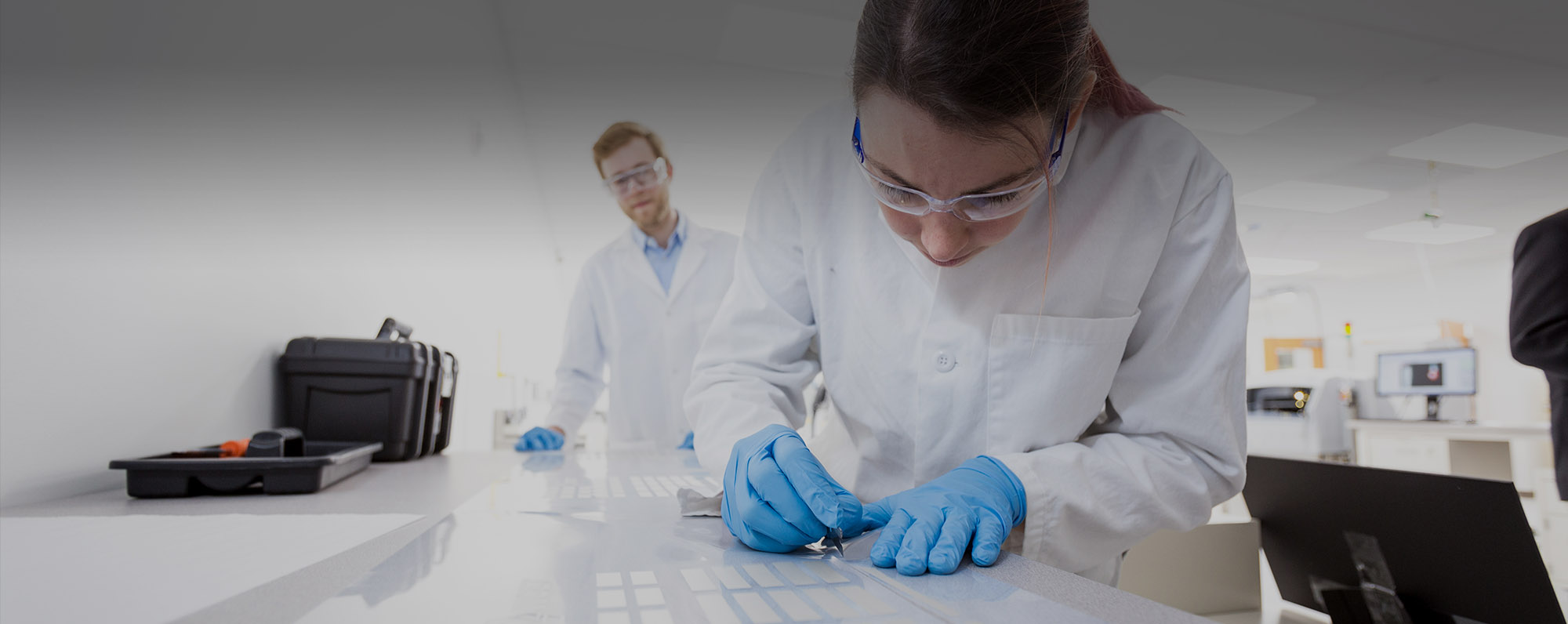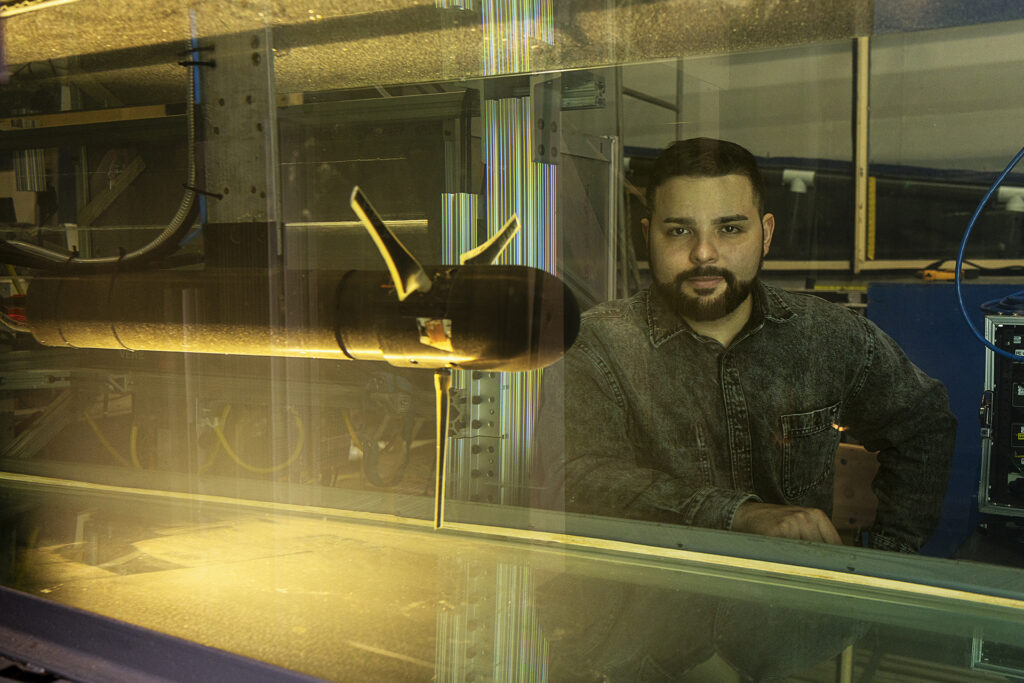
After seeing the devastation of hurricanes in Puerto Rico, grad student Miguel González-Montijo is working on clean energy innovations for the future.
By Jamie Swenson | Photos by Dennis Wise | May 2024
As Hurricane Maria tore through Arecibo, Puerto Rico, in 2017, Miguel González-Montijo hunkered down at home with his family. They were no strangers to hurricanes. Just two weeks earlier, a Category 5 Hurricane Irma had skirted the island, demolishing homes, causing floods and knocking out power for more than a million people. And now Maria, with wind speeds up to 155 mph, was hitting Puerto Rico dead-on. Arecibo, with its peaceful golden beaches and lush hills rising behind it, was now a maelstrom of howling wind and driving rain.
Human-caused climate change was already leading to warmer oceans, enabling more frequent and more powerful hurricanes. But González-Montijo wasn’t thinking that far ahead — he was wondering when Puerto Rico’s power grid would recover and trying to distract himself by studying for graduate school entrance exams by lamplight. After earning his bachelor’s in engineering at the University of Puerto Rico at Mayagüez, he was deciding between finding a job or pursuing graduate studies.
Once the winds subsided, he and his family went outside to survey the scene. “Everything was destroyed,” he says. “The streets were filled with trees, light posts and electrical cables.” It soon became clear just how bad the situation was. A full 97% of Puerto Rico’s electricity is generated by fossil fuels and must travel over rugged mountains and through dense jungle en route to its customers — and now that electrical grid was in shambles. It would be two and a half months before González-Montijo’s family got their power back; others waited nearly a year. It was the longest blackout in U.S. history.
``This has been a beautiful journey that has seen me grow first as a person, and then as an engineer.``
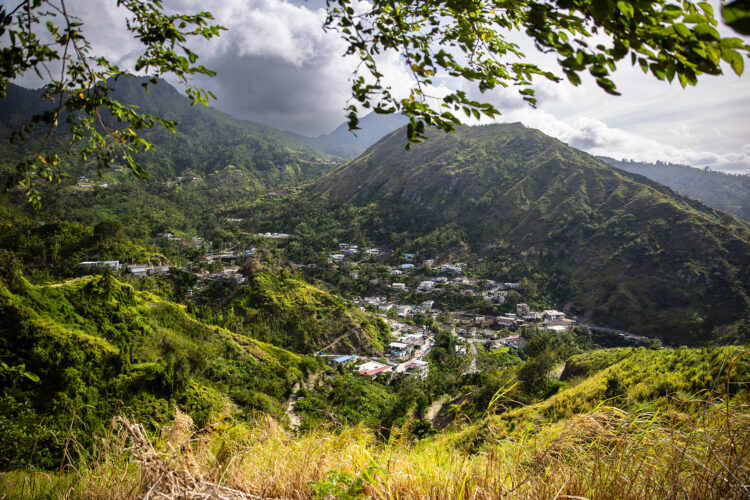
In the meantime, González-Montijo decided to pursue a graduate degree in civil and environmental engineering. He knew local jobs might be scarce as Puerto Rico slowly recovered. And there was a lot he still wanted to learn — hoping to eventually return home with skills to help make Puerto Rico more resilient.
Accepted to schools across the country, he chose the University of Washington for its many cross-disciplinary research opportunities. He’s now on the cusp of earning his doctorate. His intellectual curiosity led him to clean energy, and at the UW, he found a community of people — in fields from electrical engineering and public policy to chemistry and physics — who shared his growing passion.
``The UW has become a home away from home ... The best part has been the people, who have been caring, compassionate, understanding and invested since day one.``
Freedom to explore
In his first year at the UW, González-Montijo learned that marine energy combined with microgrids (localized power grids) could help Puerto Rico and other places recover from natural disasters. He got involved with a research project to more efficiently and economically produce marine hydrokinetic turbine blades — essentially, propellers that harness energy using the natural movement of water.
“The UW became a home away from home. I’ve had the freedom to explore the research I wanted to do and have stretched my curriculum far beyond my civil engineering roots,” he says, noting that he felt supported to delve into the nuances of his field and build multidisciplinary connections. “But the best part has been the people, who have been caring, compassionate, understanding and invested since day one.”
In 2013, the UW launched the Clean Energy Institute (CEI) under founding director Dan Schwartz. Through CEI, students of all levels can conduct innovative research and development using top-of-the-line equipment, which preps them for the clean energy workforce. As one of those students, González-Montijo is grateful for the opportunity he’s had to work directly on projects with Schwartz.
“That man can make you believe you can do anything,” he says.
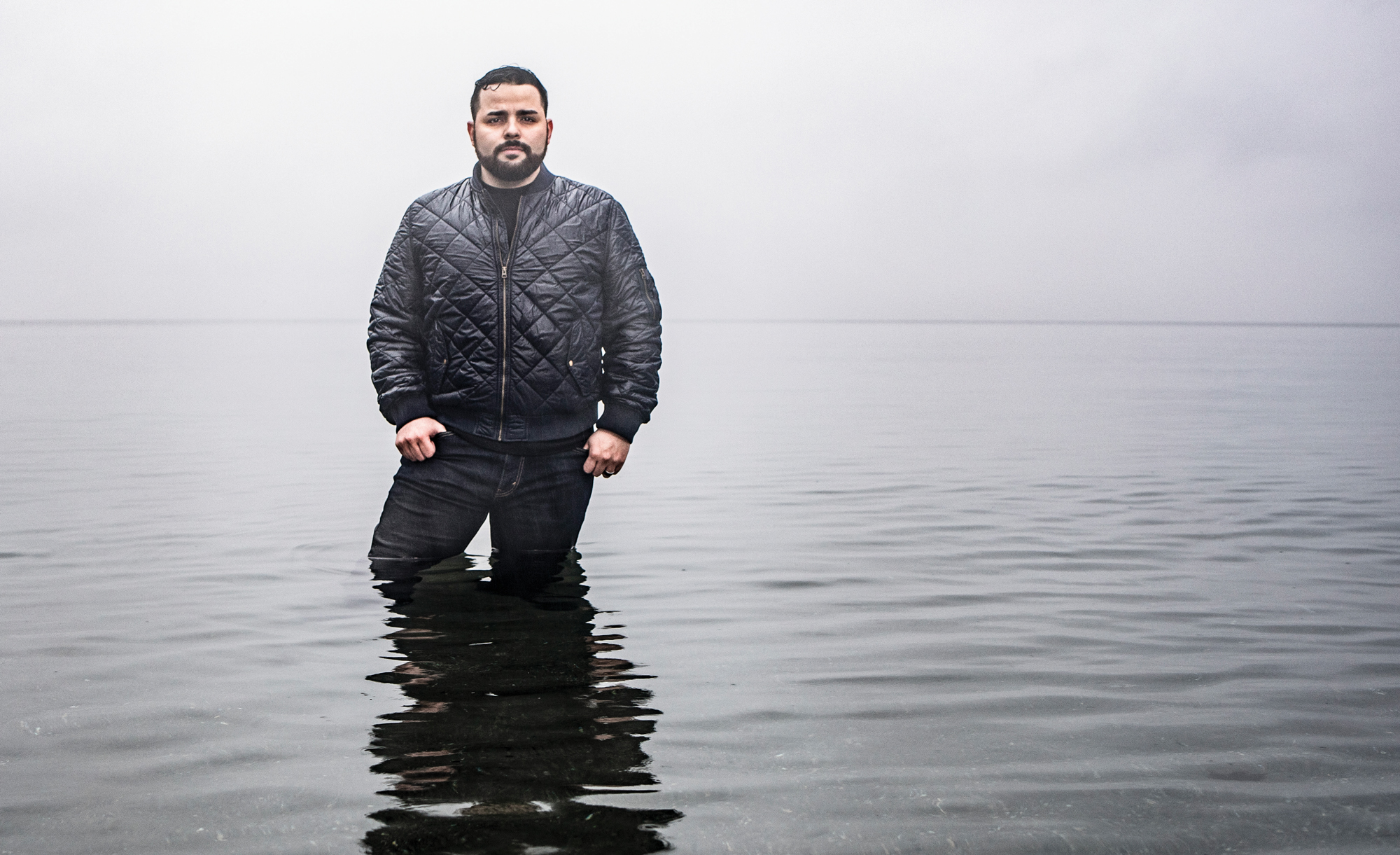
CEI also gave González-Montijo the chance to experience how public policy is a critical part of getting clean energy technology from the lab into the world.
As a Science Policy Analyst in CEI’s Advanced Experience Program, supported by the Mark Torrance Foundation, González-Montijo was among a group of graduate students who contribute to technical policy briefs and white papers for the Washington State Academy of Sciences (WSAS), which helps inform state policy.
As a policy analyst, he worked on a report about decarbonizing Washington’s aerospace sector, which was presented at a WSAS symposium. He also got to hear from the CEO of electric-airplane company magniX and meet with a Washington state senator. Having his expertise valued made an impact on González-Montijo.
“If this can happen here,” he realized, “it could happen in Puerto Rico. It gave me hope that one day my voice could matter there.”
As an undergraduate in Puerto Rico, González-Montijo had loved being part of STEM outreach. When he earned a CEI Graduate Fellowship he was able to continue that work, learning from industry leaders and doing community outreach.
He teamed up with Ricardo Rivera-Maldonado, a chemistry doctoral student and CEI fellow who’s also from Puerto Rico, to produce CEI’s first Spanish-language learning resource: a bilingual climate science fact sheet for K–12 students. They hoped to empower young people to discuss climate change and clean energy with their families and communities.
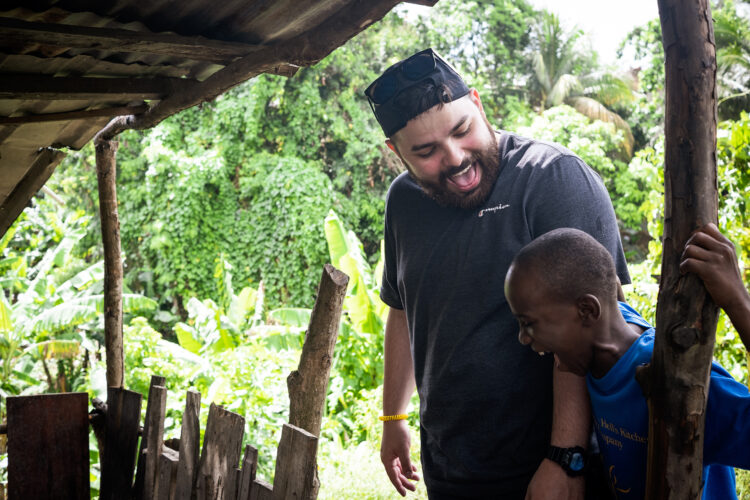
He remembers one visit to an elementary school in North Seattle, where a girl who didn’t speak English became fully engaged when he and Rivera-Maldonado presented in Spanish. At a school in South Seattle, a young girl told them, “I want to be a scientist someday,” and began peppering them with advanced questions about geothermal energy. For this meaningful project, González-Montijo and Rivera-Maldonado were honored with the Clean Energy Outreach & Service Award in 2022.
``At the UW, I’ve had the freedom to explore the research I wanted to do and have stretched my curriculum far beyond my civil engineering roots.``
A beautiful journey
Over his UW career, González-Montijo has advanced research in marine energy, including by presenting two papers at a clean energy conference in Spain in fall 2023 through a Neil and Ann Hawkins fellowship.
Through CEI, he’s traded ideas with colleagues and professors in chemistry, electrical engineering and physics. And he’s shared his expertise with people in government, in industry — and in elementary school.
“Not everyone needs a Ph.D. to contribute to clean energy,” he says. “There are a lot of opportunities that allow you to participate in this exciting field.”
González-Montijo has also been a graduate research assistant for the U.S. Department of Energy’s National Renewable Energy Laboratory (NREL), where he has designed and developed a marine turbine blade component that will be open-source and accessible to startups working in marine energy. “Right now, we can’t afford to be selfish,” he says.
Because NREL extended his contract, González-Montijo plans to graduate after summer quarter. With his broad range of interests and experiences, he knows his future is full of possibilities, from startups to research to full-time outreach.
No matter where his next step takes him, González-Montijo is thankful for the caring and compassionate people who have invested in him throughout his educational path.
“The University of Puerto Rico at Mayagüez gave me wings, and the UW gave me the air that made me take off,” he says. “It has been a beautiful journey that has seen me grow first as a person, and then as an engineer.”
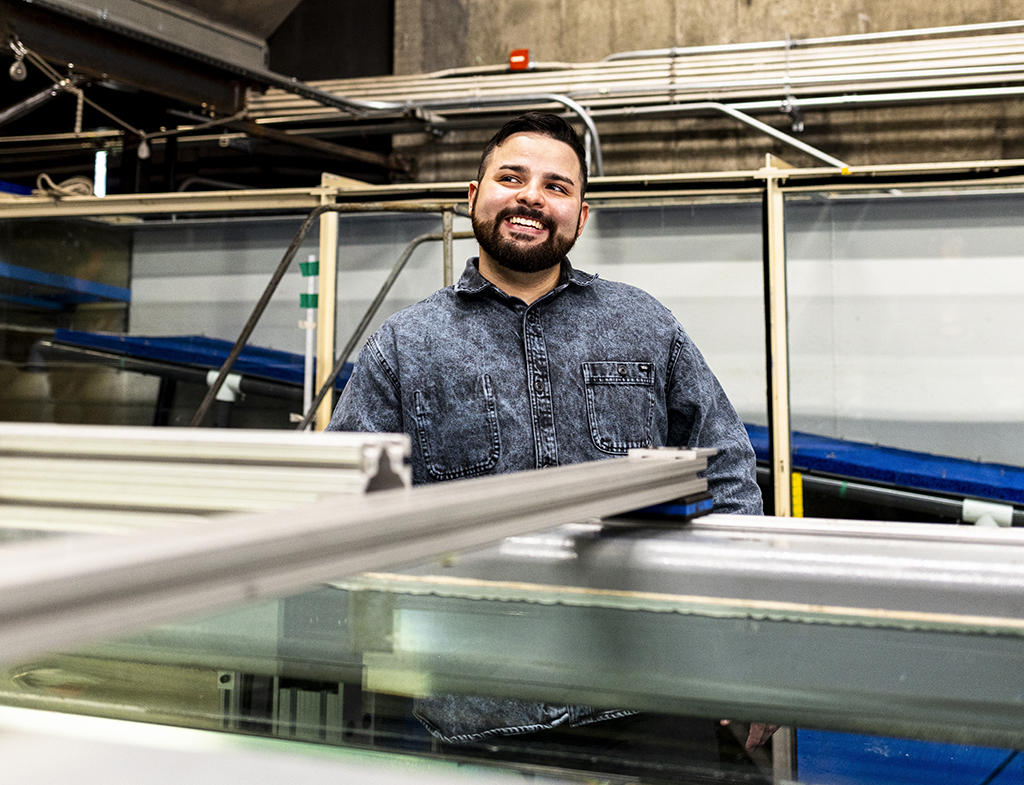
Hope for the future
After Hurricane Maria passed, González-Montijo remembers the intense humidity that clung to him like a blanket. The smell of shredded vegetation lingered on the air, clean like freshly cut grass. The familiar crickets, owls and frogs stayed eerily quiet the first night or two. Gradually, they reemerged and resumed their nighttime calls. It would take the people of Puerto Rico much longer to begin returning to life as usual.
“If we were using other sources of energy, perhaps there wouldn’t be such a dire situation every time we get a natural disaster,” says González-Montijo. He has hope, though. Clean energy technology is seeing huge advances that could make a difference around the world. In fact, he says, NREL is studying how to best deploy marine and wind power and microgrids in Puerto Rico. And communities there are already starting solar-powered microgrids of their own.
There is one positive that González-Montijo remembers from the aftermath of Hurricane Maria: “It created unity among us. We depended on one another. It brought us all closer together.”
Perhaps a clean energy future will be powered by such a supportive mindset. González-Montijo is doing his part to make this a reality.
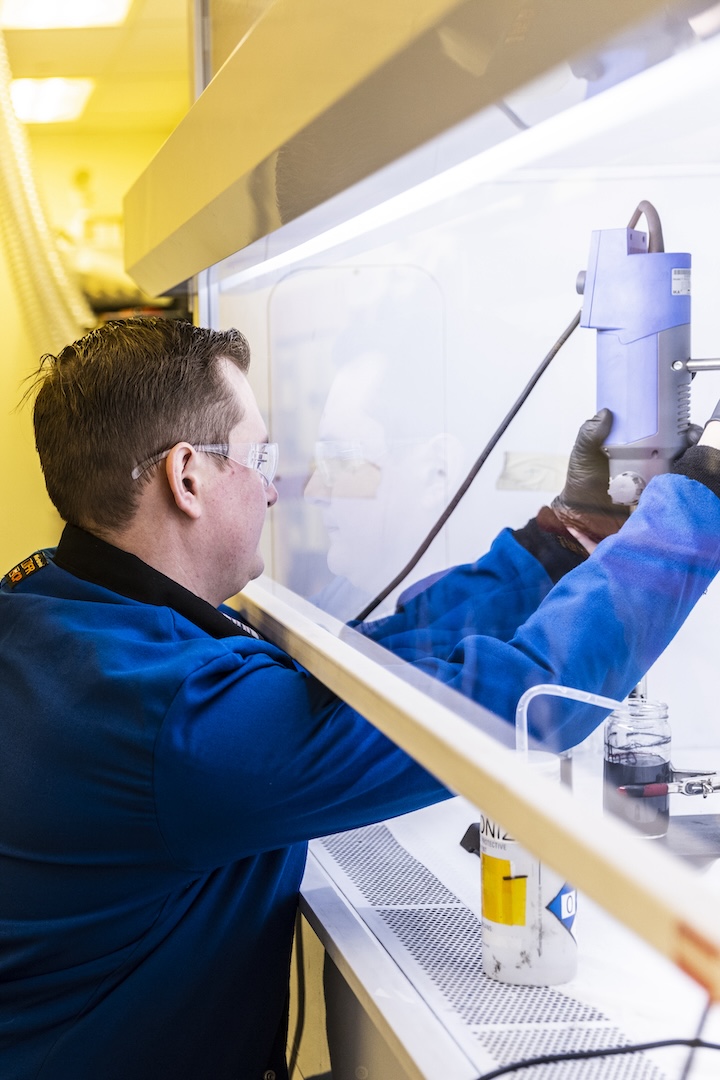
The power of clean energy
In 2013, the UW launched the Clean Energy Institute (CEI) with support from the state of Washington, with Gov. Jay Inslee, ’73, championing the investment. The institute’s goal was to speed up the transition to a clean energy future by advancing the next generation of solar energy and battery materials and devices, and improving their integration with the power grid. It was good timing: That same year, the Intergovernmental Panel on Climate Change released a daunting report, warning of the consequences of unchecked carbon emissions. From the get-go, CEI would operate with a sense of urgency. Over the past decade, a combination of federal, state and private investment has bolstered its mission.
In 2017, CEI opened its Washington Clean Energy Testbeds, high-tech labs where researchers and industry partners can use top-of-the-line equipment to develop clean energy technology. Thanks in part to philanthropic funding, the Testbeds recruited faculty and staff with deep industry experience to help innovators translate research into prototypes and market-ready products. Students of all degree levels can conduct clean energy research and development side-by-side with industry. And each year, dozens of graduate students gain fellowships and professional experiences through CEI. And soon, the Testbeds will move into a new home as part of Portage Bay Crossing, a new west-campus urban development focused on problem-solving.
“I’ve been a professor for a long time, and I’ve never seen the motivation of the students circulating around the Clean Energy Institute,” says Dan Schwartz, Boeing-Sutter Professor of Chemical Engineering and CEI founding director. “They know we’re putting them in a position to have an impact.”



